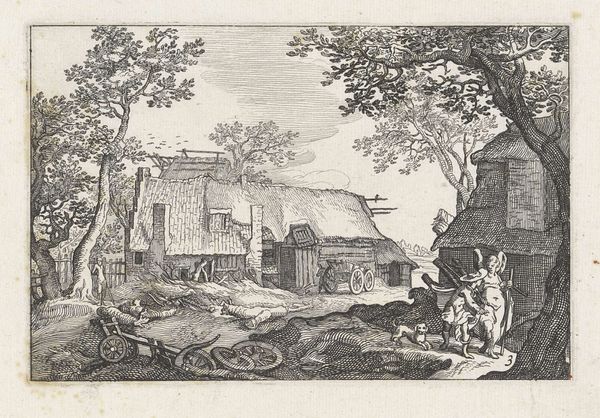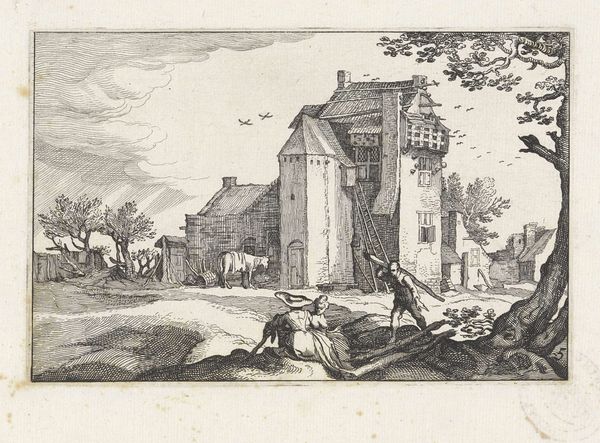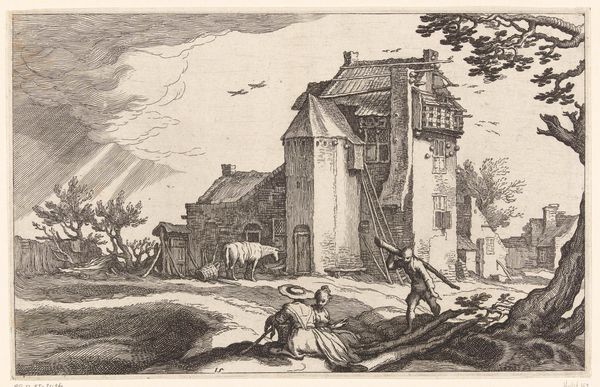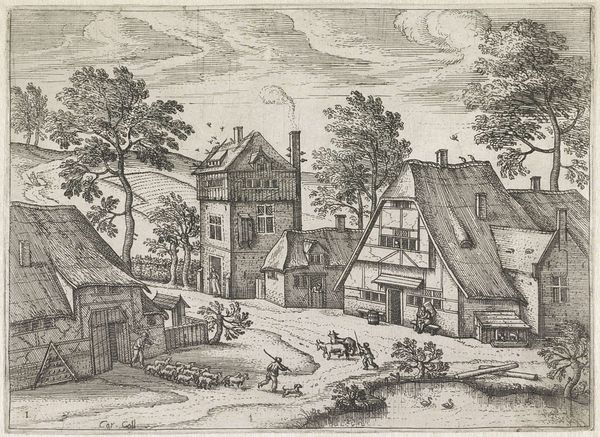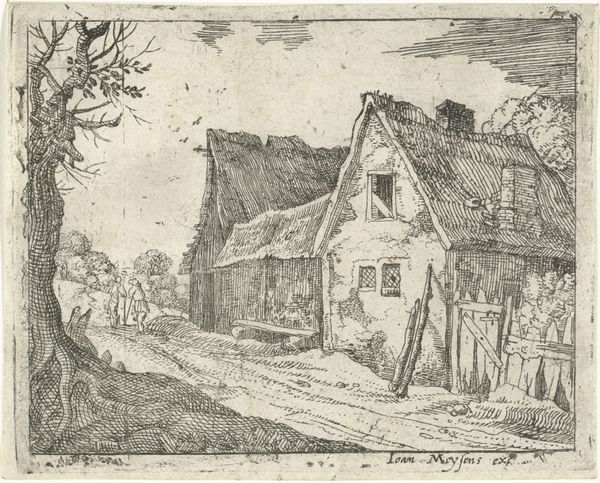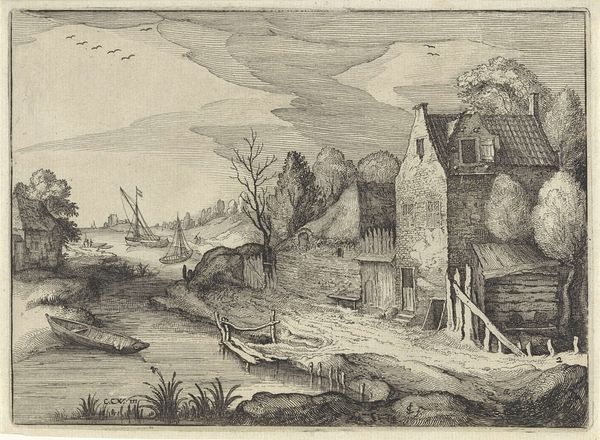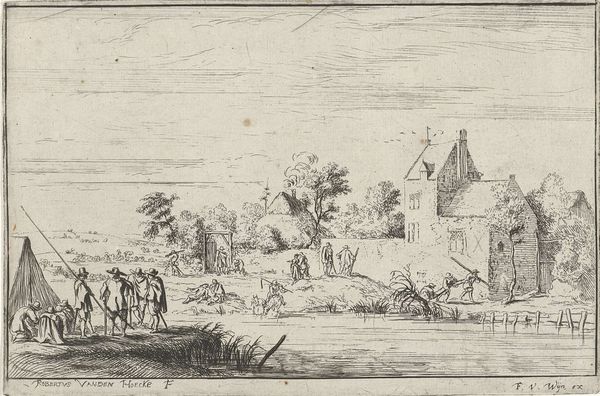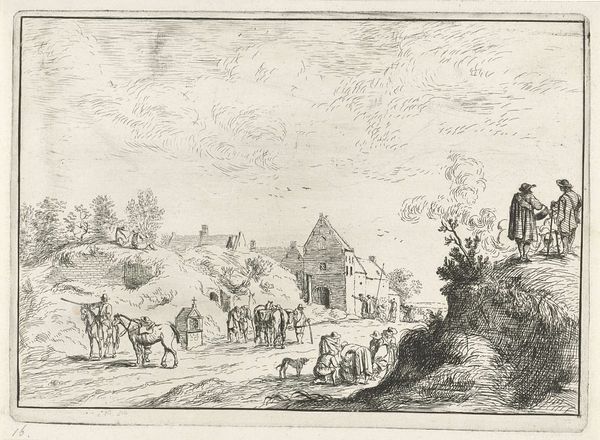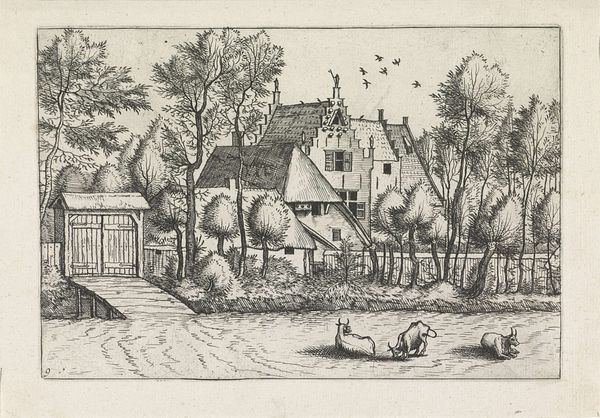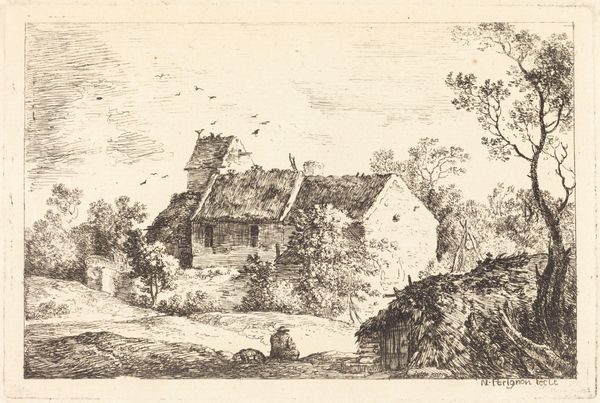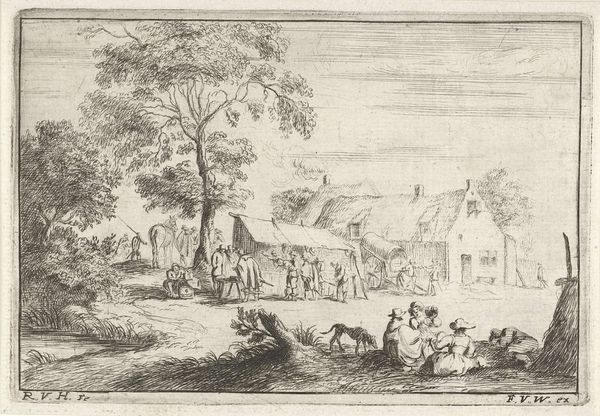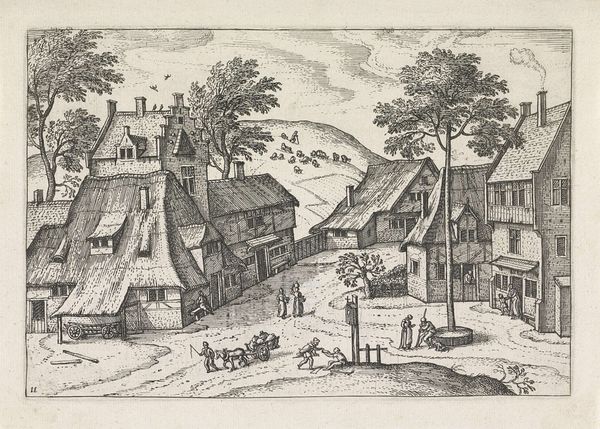
print, engraving
#
dutch-golden-age
# print
#
pen sketch
#
landscape
#
figuration
#
line
#
genre-painting
#
engraving
#
realism
Dimensions: height 104 mm, width 158 mm
Copyright: Rijks Museum: Open Domain
Curator: The density of line is quite remarkable, isn't it? Note how Visscher uses it to create depth and texture in "Boerderij en herder met schapen," or "Farm and Shepherd with Sheep," from 1620. Editor: My immediate impression is one of quiet labor. Despite the seeming simplicity of the composition, the figures suggest a subtle commentary on rural life in the Dutch Golden Age. What were the working conditions like, who had access to land, and how does Visscher navigate those tensions? Curator: He manages light so efficiently! Look at how the density of lines around the buildings contrasts with the relative openness of the sky, which almost seems to glow, wouldn't you say? The strategic hatching and cross-hatching give an impressive atmospheric depth to the rendering. Editor: Absolutely. We're seeing not just an image of labor, but the gendered dynamics of that labor. Where are the women? How does the composition normalize their absence, speaking to broader patriarchal structures? I think such formal analysis helps unlock so many complex meanings when approached with these intersectional questions. Curator: I see your point. Though it is an engraving, the precision with which he renders detail lends the print a unique atmospheric quality. There is also something very carefully orchestrated in the organization of forms. It's certainly much more than a pen sketch! Editor: Which also tells us something about how he viewed the natural world around him—not simply as an objective subject, but as a site imbued with ideology, isn't it? In this landscape, we also glean critical information regarding wealth distribution. The presence of animals—sheep, which were essential to the early Dutch economy—in close proximity to those who tend them suggests a delicate socioeconomic power balance. Curator: And from an art historical perspective, knowing it now resides in the Rijksmuseum contextualizes it among the masters of its period, offering more to unlock formally and conceptually. It gives us so much to discuss! Editor: Indeed! Analyzing art like this gives voices to so many people usually ignored. It becomes a critical tool to interpret complex meanings that often went unspoken in mainstream historical discourse.
Comments
No comments
Be the first to comment and join the conversation on the ultimate creative platform.

